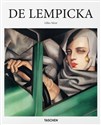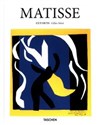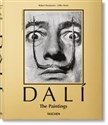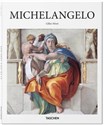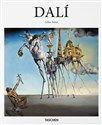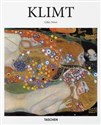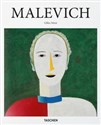Gilles Neret książki
Książki autora Gilles Neret z wysyłką do USA, Kanady i Australii.
Sortuj wg
De Lempicka
[Oprawa Twarda]
Tamara de Lempicka (1898–1980) lived art in the fast lane. With an appetite for glamour and fame as much as Left Bank bohemianism, she fled her native Russia after the Bolshevik revolution and set ab
Matisse Cut-outs
[Oprawa Twarda]
Henri Matisse (1869–1954) was a fighting spirit. Despite a cancer diagnosis in 1941, increasing frailty, and the confines of a wheelchair, the indomitable Frenchman never stopped in his quest to make
Dali The Paintings
[Oprawa Twarda]
The essential reference on Salvador Dalí’s painted oeuvre
At the age of six, Salvador Dalí (1904–1989) wanted to be a cook. At the age of seven, he wanted to be Napoleon. “Since then,” he later said
Michelangelo Basic Art Series 2.0 1475-1564
[Oprawa Twarda]
Renaissance man in extremis
Michelangelo, in pursuit of the beautiful and sublime
Italian-born Michelangelo di Lodovico Buonarroti Simoni (1475 1564) was a tormented, prodigiously talented, and G
Rubens
[Oprawa Twarda]
There are over 1,000 catalogued works by Sir Peter Paul Rubens (1577-1640), the 16th-century flag bearer for Baroque drama, movement, and sensuality. This essential introduction takes in the most imp
Dalí
[Oprawa Twarda]
Painter, sculptor, writer, filmmaker, and all-round showman Salvador Dalí (1904–1989) was one of the 20th century’s greatest exhibitionists and eccentrics. One of the first artists to apply the insig
Erotica Universalis
[Oprawa Twarda]
From the dawn of time, ever since Adam and Eve, all artists of every age-whether the Egyptian, Greek, or Roman artists of Antiquity, or more recent famous names such as Rembrandt, Courbet, Degas, or
Klimt
[Oprawa Twarda]
A century after his death, Viennese artist Gustav Klimt (1862–1918) still startles with his unabashed eroticism, dazzling surfaces, and artistic experimentation. This monograph gathers all of Klimt’s
Anioły
[Oprawa Miękka]
`Artyści zawsze lubili malować anioły, ponieważ mogli je umieszczać je umieszczać na obrazie w dowolnym miejscu, a także dlatego, że mogli malować dowolną ich liczbę. W niebie anioły grają na instrum
Renoir
[Oprawa Twarda]
Pierre-Auguste Renoir’s (1841–1919) timelessly charming paintings still reflect our ideals of happiness, love, and beauty. Derived from our large-format volume, the most comprehensive retrospective
Malevich
[Oprawa Twarda]
After flirtations with Realism, Impressionism, and Symbolism, Kiev-born Kazimir Malevich (1878–1935) found his métier in dissolving literal, representational figures and landscapes into pure emotiona
Dalí
[Oprawa Twarda]
Painter, sculptor, writer, and filmmaker, Salvador Dali (1904-1989) was one of the century's greatest exhibitionists and eccentrics-and was rewarded with fierce controversy wherever he went. He was o
Dali wersja polska
[Oprawa Miękka]
Dali jako jeden z pierwszych przeniósł do malarstwa odkrycia Freuda i psychoanalizy, i z pedantyczną dokładnością, wielką fantazją i wyjątkową intuicją śledził ukryte warstwy świadomości. Słowem i ob
Diabły. Icons
[Oprawa Miękka]
`Rzymianie nazywali go `diabolus`, Grecy `diabolos`, czyli oszczerca. W mitologii starożytnej złego ducha nazywano demon, od greckiego `daimon`. Piekło istniało bowiem od dawien dawna, w starożytnym



